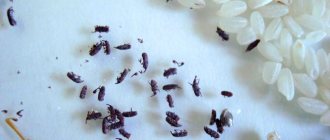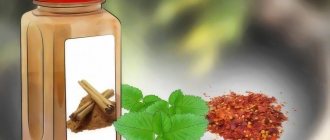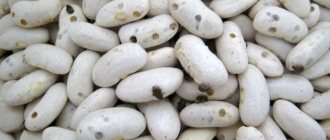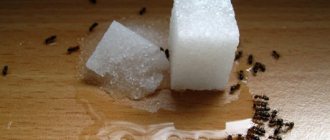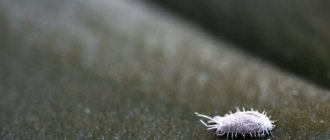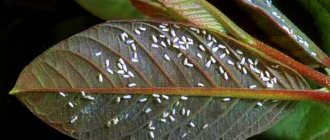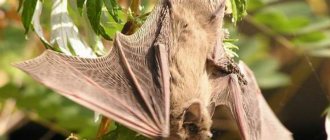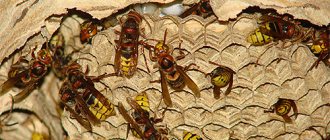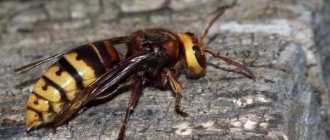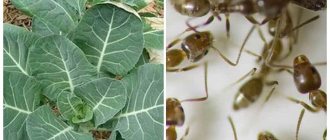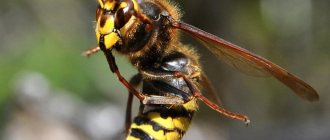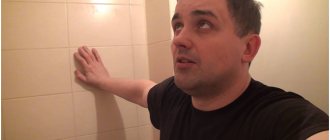| Method used | Indications for use | Number and size of hives |
| Pulverization | Destruction of hives that have easy access for manual spraying with the solution. These are low-lying nests that can be easily approached (under the windowsill, on the porch, in the attic, in the utility room, on a lower branch). | Small single nests (1–2 pcs.). |
| Cold fog | Disinsection of wasps living in large nests that have good to moderate accessibility. The method is suitable for processing beehives, access to which is complicated by a high location and/or the presence of obstacles (branches, furniture, building materials). | Small and large nests (medium number). |
| Hot fog | Disinsection in places with extensive wasp infestation, large and hard-to-reach hives, access to which requires partial or complete dismantling of structures (floors, roofs). | Multiple nests of any size - small, large, giant hives. |
| Barrier protection | Prevention of recolonization of wasps. Useful for medium, large number and size of hives. | 0 (Prevention) |
The choice of method depends on the degree of infestation of the object with wasps and the level of availability of hives for treatment.
- Pulverization. The insecticide solution is poured into a spray bottle, which is used to treat the wasp nest. The spray particle size is 50–220 microns. Therefore, spraying is used to treat small hives - the insecticide solution will not be able to penetrate into the deep layers of a large cocoon.
- Cold fog. The working solution is sprayed using a fog generator. It turns the solution into a cloud consisting of tiny particles of liquid suspended in the air, up to 40–80 microns in size. They easily penetrate even hard-to-reach places and destroy adults, larvae and eggs.
Experts calculate the concentration taking into account the type of insects and the degree of infestation of the home or summer cottage. The method is safe for people and animals; it does not damage polished furniture, wooden elements and fabric upholstery, and does not leave stains or streaks.
- Hot fog. The method involves the use of a thermomechanical generator that sprays a working solution heated to the temperature of water vapor. A hot cloud is more effective than a cold one, since it affects wasps not only chemically, but also thermally. Its particles penetrate better through the porous structure of a wasp's nest, since their sizes do not exceed 3–30 microns.
When killing wasps with hot fog, precautions should be taken. The procedure requires preliminary cleaning of food and personal hygiene items. Masters of the wasp disinfestation service work in respirators and protective suits. The presence of other people and animals in the treatment area is unacceptable.
After destroying the hive, we recommend using barrier methods.
They include a set of measures aimed at preventing the colonization of an object by insects after treatment. These include applications:
- Insecticidal lamps.
They lure with ultraviolet light and electrocute the wasps when they land on an energized grate. - Glue traps.
Ultraviolet emitters or attractants (preparations with a pleasant smell for insects) are used as bait. Wasps that land on the adhesive plate become glued and soon die. - Repellents.
This is the name for drugs that have an unpleasant odor for insects. Wasps will not nest in places that smell bad. - Household insecticides
. The dacha area and premises must be regularly treated with aerosols that will destroy insects arriving from neighboring areas. An alternative is insecticidal gels. They are applied to surfaces in areas where wasps are most likely to appear. Arriving individuals die after contact with the gel before they can begin building a nest.
Attention!
When ordering a comprehensive disinsection, which includes the treatment and disposal of hives, as well as the organization of barrier protection, you will receive a maximum guarantee of 6 months.
How to prepare for the arrival of a wasp disinfection specialist?
You need to carefully prepare for wasp disinfestation. Preparation includes:
- Providing access to the wasp hive
. To process the nest, a SES specialist must enter the room in which it is located. If the hive is located in a hard-to-reach place, a ladder and/or partial dismantling of structures that prevent access to it may be required. - Removing from the premises
things that should not come into contact with the sprayed solution. If the drug substance gets on the skin or inside, poisoning may develop. Therefore, before disinsection, you need to remove personal hygiene items, dishes, children's toys and other items that may touch the skin (clothing, bedding) from the house. Wrap food in film. - Leaving the facility
. Not only people, but also pets are not allowed to stay indoors during treatment. To prevent chemicals from getting into your aquarium, cover it with a lid. Remove cats, dogs, birds, rodents and other animals. Collect the children and leave the premises yourself.
This is a list of general recommendations for preparing for professional disinfestation of wasps. It can be supplemented and changed. You will receive more detailed instructions from the manager.
Folk methods of dealing with wasps
The most popular and safest way to control wasps is with a baited trap. You can buy it in a store or make it yourself. For this you will need a plastic bottle. The top third is cut off and placed in the second part, neck down. Something sweet and preferably fermented is poured into the bottom of the trap, for example, old jam, beer, you can also add spoiled apples or meat. Experienced gardeners say that slightly spoiled produce attracts wasps, but almost certainly will not interest bees. An insecticide without a strong odor must be added to the bait.
The sweet bait should not touch the neck of the bottle
The following method is extremely unsafe, so we do not recommend using it without special clothing. Any popular insecticide is poured into the thickest cellophane bag and firmly placed on the nest. The edges of the bag are glued to a flat surface. You can remove the bag only after a few days, after tapping it with a stick and listening. Instead of a bag, you can use a bucket without a handle or a large pan, under which you will have to place a stepladder. After removing the nest, the place where it was attached must also be treated with an insecticide.
It is better to destroy wasp nests in the fall or spring before they settle. If this is not possible, spray wasp nests with insecticides at night when wasps are less active.
Destruction of wasp nests in the country
“Des Eco-Mos” has been accepting applications for the disinfestation of wasps in summer cottages in the Moscow region for more than 10 years. Based on the experience of field trips, we have established the most common places in which wasps build nests. These include:
- Attics, roofs. Wasps often nest under exterior eaves, under slates, and under the awnings of barns and other buildings.
- Gaps in wood and other structures. A small gap in the wall allows pests access to the voids.
- Shrubs, trees. Wasps form hives in hollows, under massive branches of willows, oaks, and in dense thickets of hedges.
- Soil (ground wasps settle in underground nests). Insects nest in abandoned burrows of field mice and other rodents. They prefer places that are not disturbed by humans (lawn, perennial plantings).
Hornets and wasps love to build hives near dachas, so living conditions near humans are ideal for them. At their summer cottage, they easily find a place protected from precipitation, in which they form a hive. As a building material, insects use wood from various buildings, which they chew and turn into paper. The main source of food for them is fruits and berries that grow in the garden.
After processing the summer cottage, you need to leave it for 3-5 hours. You should refrain from walking on it for 3 days.
Attention!
Disinsection of wasps in the Moscow region can be carried out at any time of the year. But the peak of orders for the destruction of wasp hives occurs in August and September, when the insects become aggressive and especially dangerous to people.
Where do wasps come from in the house and how to prevent their appearance?
Wasps are attracted to people's homes by two things: food and warmth. They love sweets and fruits, especially fermented ones, so a jar of jam that is not washed in time can become a real magnet for these insects. They do not disdain fish and meat, and they are more attracted to products with foulbrood. Therefore, if you do not want wasps in your house:
- Keep food waste in a closed bin and throw it away every day;
- do not leave food, including washed fruits, on the table or cover them with special nets;
- do not collect dirty dishes in the sink;
- put mosquito nets on the windows.
The second reason for the appearance of wasps in a private home—warmth—is difficult to do anything about. These insects cannot regulate their body temperature, so they are attracted to places that are sheltered from the wind and retain heat at night: tree hollows, piles of garbage, attics, underground floors, voids in ceilings and walls.
There is no guarantee to avoid the appearance of wasp nests - it is impossible to make the house completely airtight. But it is possible to reduce the likelihood of striped tenants “moving in.” It is enough to seal as many cracks in building structures as possible.
For example, wasps can settle in the wall of a house if two conditions are met. First, there must be space between the wall and the sheathing to accommodate the nest. Secondly, a gap is needed through which an insect can enter this space. If there is no gap, there will be no wasps in the wall.
What to do if bitten by a wasp?
Attempting to destroy a wasp nest on your own often results in multiple stings. If you are allergic to wasp venom, even one bite is dangerous, which can lead to the development of Quincke's edema or anaphylactic shock. If you are nevertheless bitten by a wasp, take first aid measures:
- Rinse the sting site with cold water to remove any remaining wasp venom.
- Treat the skin with an antiseptic (iodine, Miramistin, hydrogen peroxide).
- Take an antihistamine in accordance with the instructions for it (Suprastin, Zyrtec, Diazolin, etc.).
If you feel unwell, contact your doctor. If an allergic reaction develops quickly, call an ambulance. Medical assistance is necessary if you receive multiple bites, especially if after them you notice the appearance of swelling, fever and symptoms of intoxication.
How to get rid of wasps in the house?
If precautionary measures do not help, and wasps appear at home, then to get rid of them:
- find a nest;
- kill the wasps in it with insecticides;
- remove the nest.
But before you start fighting insects, take care of your own safety. Do not approach a wasp nest without preparation - it is deadly!
Safety precautions
Wasps are stinging insects. Unlike bees, which can only sting once before dying, wasps can attack over and over again, injecting venom with each attack until it runs out. Moreover, if threatened, the insect releases a special pheromone, which causes an attack by other wasps. And if there are a lot of wasps in the house or a whole hive nearby, the consequences can be disastrous.
Wasp venom itself is dangerous and painful. But the worst thing is that it is a strong allergen. Even one bite can lead to a large-scale allergic reaction, including anaphylactic shock.
Therefore, before removing wasps at home, you need to prepare:
- Wear thick, baggy clothes, preferably 2-3 layers. Clothing must completely cover the body, including wrists, ankles, waist, and neck. Tuck your shirt into your trousers and tighten your belt.
- To protect your hands, use thick gloves, ideally leather. Tuck your sleeves into them, tie your wrists with a rope so that the wasp cannot get inside.
- Wear high boots so that you can tuck your pants into the top.
- Protect your head with a mosquito net or beekeeper's hat. You can make your own protection from any wide-brimmed hat, fine mesh and rope.
Since it is difficult to remove wasps from your home without getting a single bite, you should definitely have a package of antihistamines on hand. If you have already had a severe allergic reaction to insect bites, under no circumstances should you attempt pest control yourself.
Where to look for wasp nests in the house
Wasps rarely make their nests in plain sight. They prefer secluded corners, so, most often, wasps settle under the roof of a house or in the attic. In addition, their nests can be:
- under slopes and window sills;
- behind cabinets in the corners of rooms;
- above the indoor units of air conditioners;
- behind refrigerators and freezers;
- inside walls, ceilings, floors;
- in a garage or workshop behind shelving;
- from below on flights of stairs or steps.
Wasps in a wooden house, especially if it is a log house, like to make nests behind the platbands, as well as in the cavity between the interior decoration and the wall of the building.
If you can't find the nest, simply follow the insects. To do this, place a piece of sweet fruit or some jam in a place where wasps often visit, and see where they fly with their prey.
Treating wasp nests with insecticides
How to get rid of wasps in the house? Treat the nest with a special insecticide. It is best to do this 2-3 hours after sunset. At this time, wasps are least active, and most of them are in the nest.
For lighting, use a flashlight attached to any structure. It should not be held in hands or attached to the body - when processed, wasps may fly towards the light source.
Treat wasp nests in residential areas with aerosol insecticides. They create a fine suspension that penetrates well into the cavities of the hive.
If wasps have settled in the attic, then concentrated compounds that are diluted with water can be used against them.
But without special equipment, they are not as effective as aerosols, so re-treatment may be necessary. Active ingredients in anti-wasp aerosols
| Active substance | How does it work | Peculiarities |
| Permethrin | Contact-intestinal insecticide that, when accumulated, affects the nervous system | It acts not only on adult wasps, but also on eggs and larvae. |
| Piperonyl butoxide (PPB) | Enhances the effect of certain types of insecticides. | Rapidly deteriorates when exposed to sunlight. |
| Tetramethrin | It enters the insect's body with food or through the respiratory tract. Causes paralysis. | Almost instant action. |
| Cypermethrin | A contact-intestinal insecticide that paralyzes the nervous system. | Resistant to ultraviolet radiation, after treatment it remains on surfaces for 20-30 days. |
| Esbiotrin | Nerve insecticide | Use only in combination with other insecticides. |
| Prallethrin | Broad spectrum insecticide | A very volatile substance that disappears quickly. |
| Imiprotrine | A contact insecticide that causes paralysis. | Almost instant action. |
Wasp sprays contain not just one substance, but a combination of different insecticides. This provides a “knockdown effect” and provides long-lasting protection against the reappearance of insects - sometimes up to two months.
When choosing an aerosol, pay attention to the spray distance. To remove wasps from the house, products that are sprayed from a distance of 20-30 cm are suitable. To remove nests from the outside or in the walls, high-pressure aerosols are needed. They can be sprayed at a distance of 2-6 m.
Products intended for indoor use erode easily. Therefore, before removing wasps from under the roof of the house, close all windows and large cracks. If insects have settled inside the wall, seal all holes except one. Spray the remaining hole and close it too.
After spraying, it is better to leave the nest for a day. Then remove it and burn it or throw it away from the area.
Hornet and wasp extermination service
Our company carries out the destruction of wasps in Moscow and the region. We provide our clients:
- preliminary consultation on the rules of preparation for processing;
- quick on-call exterminators;
- use of effective drugs that are safe for humans and pets;
- application of complex methods of wasp disinfestation;
- affordable prices for the destruction of wasps, hornets, wild bees;
- providing a guarantee for work.
You can order the destruction of wasps by contacting the sales department managers. Consultants will answer questions, tell you how to prepare for disinsection, about treatment methods, and coordinate the time for disinfectors to visit the site. We will rid your cottage or apartment of insects, and also install traps and place barrier protection to prevent re-infestation.
Arrival time of the specialist for an urgent visit to your site
01/13/2022 from 09:46* to 12:16*
Night departure possible!
* The arrival time of the master is calculated approximately. For clarification, contact the manager by phone or request a call back
Mechanical removal of the nest
If a wasp nest is found on the property or in the house, it must be removed. The best option is the “Treatment with pesticide – removal” scheme. But mechanical removal of the nest without preliminary spraying is allowed. True, this is very dangerous and requires dexterity and speed.
Methods for manually removing a nest:
- Spraying it with flammable material and then burning it, or using an improvised “flamethrower” from an aerosol. The most dangerous method that can only be practiced outdoors to prevent a fire.
- Place a thick bag on the bottom of the hive, or even better, use several garbage bags inserted one inside the other. Immediately grab the attachment point with your hands, tear off the nest or cut it off with a sharp knife. Once the loot is in the bag, it should be destroyed.
- Use a long stick to knock down the hive so that it falls into a bucket of boiling water placed under it. The insects will die in a matter of minutes.
- If the nest is located close to the ground, then you can try to “put” a bucket of plain water on it from below. Soon the insects will suffocate.
- The hive of earth wasps is filled with a bucket of water in which 100 g of boric acid powder is diluted. It is sold in every pharmacy.
It is important to consider that wasps can act very aggressively if they suspect danger.
Questions about the OS destruction service
Where can specialists from the sanitary and epidemiological station go to exterminate wasps?
Our pest control service accepts orders for the destruction of wasps and hornets in all districts of Moscow and the Moscow region.
What time will the exterminator arrive?
The date and time of the SES specialist’s departure is discussed with the customer in advance. Our craftsmen work seven days a week. Departure outside working hours is possible.
When is the cost of services calculated: before or after processing?
The cost of processing and destroying hives is calculated after the specialist assesses the degree of infection of the objects. Then an agreement is concluded, which specifies the exact amount: it will not change as the work progresses.
How can I pay for insect pest control services?
You can pay for the work of exterminators by bank transfer, cash or any bank card (credit, debit).
After treatment, the wasps appeared again. Will re-processing be carried out free of charge?
After disinfestation, insects may appear on your site again. If they appear during the warranty period, this may be due to the presence of resistance in pests to the drug used. In this case, we will re-process it free of charge. If wasps appear after the warranty period has expired, the service is provided for a fee.
Two adjacent areas need to be treated. Will there be any discounts?
Yes. When ordering wasp disinfestation for two or more neighboring summer cottages, we provide discounts. Their size will be clarified by the manager during a telephone conversation.
Wasp traps
Traps will help catch individual individuals that fly into the area in search of delicacies. They can also be used in the fight against these insects.
All designs can be divided into 4 groups:
- Protozoa: an open container with bait or a board coated with bait. Often insecticidal components are added to the “treat” to speed up the death of insects.
- Homemade from bottles and other containers into which aromatic liquid is poured.
- Special containers purchased in the store (can be empty so that the person pours the bait into them himself, or with ready-made liquid - for example, from.
- Complex devices powered by electricity. They lure insects with the light emitted by ultraviolet lamps. For example, "Ecosniper".
The disadvantage of traps is that they cannot catch all the insects that enter the area. Although their number is significantly reduced. In addition, destroyed individuals must be removed regularly.
Lures
The following can be used as bait poured into traps:
- diluted jam;
- fermented compote,
- light beer,
- a solution of sugar in water,
- diluted honey, etc.
Pieces of fruit, meat, fish are placed in the liquid.
To ensure that insects die instantly, you can add a solution of boric acid powder (10 g per 1 liter) to the bait or use a special insecticide with Adamant sugar.
Folk remedies
There are also folk tricks that allow you to fight wasps:
- Spraying with gasoline, kerosene, solvent or diesel fuel helps drive wasps out of their nest. This can only be used in open areas because the substances are toxic and flammable.
- The way to get rid of wasps in nature or in an area near the house is to light a fire with coniferous wood. The odorous substances released during combustion repel insects.
- Laundry soap helps fight wasps due to its pungent odor. Its pieces can be placed in places where wasps accumulate. Having made a hole in the soap and threaded a string through it, the piece is hung near the nest. Insects, most likely, will not like such a neighborhood, and they will go in search of a more suitable home. True, it takes about a week to wait for the effect.
- Red hot pepper produces a similar effect. Its pods are placed or hung next to the nest.
- Wasps are repelled by the smell of some plants. For example, wormwood, mint and lemon balm, basil and pelargonium (geranium). They contain essential oils, the smell of which is not to the liking of dangerous insects. These plants are recommended to be planted in areas or windowsills. Dried bunches also have an insecticidal effect.
The use of folk remedies does not guarantee the destruction of wasps on the site. They are recommended for use if spraying pesticides is undesirable or if there are very few flying insects.
When starting to fight wasps, you need to approach the matter responsibly: do not forget about safety and follow the instructions. If one remedy is ineffective, you should try another.
Gels
Using gels on their own will not give an effective result, but in combination with one of the above methods it will be effective. Gels can be used as bait for traps. They also treat the places where the hive is attached. Such drugs include Absolut, FAS, Legion and others.
You can view the range of effective drugs on the MosDezSpetsTorg website. Remember that when working with any chemical, you must follow safety precautions and use personal protective equipment.
Favorite habitats of wasps
Before you begin to get rid of these pests, the first thing you need to do is find their habitat. Moreover, it is capable of being located even at the most unexpected points:
- on the trees in the garden;
- in the ground in an embankment;
- in outbuildings;
- under the branches;
- in diaries;
- under stones;
- under the roof;
- in the attic;
- on a loggia or balcony;
- in the garage;
- bird's nest;
- under the floor;
- in an anthill;
- in grass;
- in the barn;
- on the veranda;
- cracks.
In order to find their nest, you should inspect the entire territory.
Safety precautions when getting rid of pests
Wasps are aggressive insects that can regard any gesture as a danger to life. The nest is guarded by scouts and guards, and in case of danger they transmit a signal to others. When an insect dies, a special substance is released, which its relatives catch and rush to attack en masse. You need to remember all this when going on an operation to destroy a nest or wasp family.
- The work should be done in the evening, when insect activity has decreased. In the dark, they have difficulty oriented in space. But everything needs to be done as accurately as possible, since they hear the smell very well. They will rush to attack blindly.
- When performing pest control operations, you should not make sudden movements; all actions must be thought out in advance, and the necessary materials must be prepared. If one insect bites, you cannot kill it, because a whole swarm will fly out.
- When using an insecticide, you should remember that it will take a few minutes to take effect; spraying inside the nest can only anger the swarm. Therefore, it is advisable to use the product outside or use a plastic bag. It pounces on the nest and quickly ties it, blocking the exit.
If a swarm of wasps accidentally flew into your dacha, you need to get rid of the invasion, use smoke bombs, set fire to rubber, and build a fire. If the insects do not threaten to bite, you can leave them alone; after a while they will fly away on their own.
What nuances need to be taken into account?
If the wasp's nest is located on a balcony or loggia, or in an apartment, we send everyone in the house for a walk, and use a pan of water or insecticides, or maybe vinegar.
If there is a wasp nest in a house, including a wooden one, you need to be more careful when handling flammable substances - try expelling the wasps with boiling water.
If the nest is in the attic, in the wall, under the roof of the house or under the floor, bait traps and professional products will help us.
If the wasps just came to visit you and did not make nests near you, they may be wild. In this case, you need to spray some sweet fruit that has begun to rot with insecticides, and take such a “delicacy” away from your home - the wasps will eat the poison and die.
